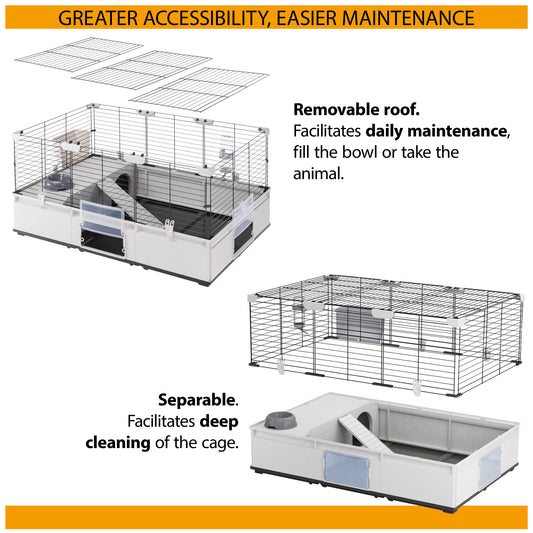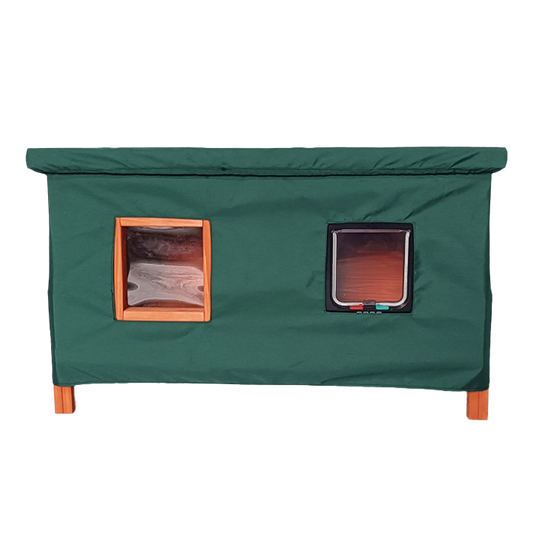Living in a household with both cats and dogs can be a rewarding and heartwarming experience. However, introducing these furry friends and ensuring they coexist harmoniously requires patience, understanding, and careful management.
Cats and dogs have different communication styles and social structures, which can lead to misunderstandings and conflicts if not handled properly. Follow these expert tips to create a peaceful home for your cat and dog. These tips will help them develop a loving and friendly relationship.
1. Slow and Steady Introductions
When bringing a new cat or dog into your home, slow and gradual introductions are key. Keep them in separate rooms and gradually allow them to explore each other's scents under closed doors. Use positive reinforcement in the form of dog treats or cat treats and praise during these encounters to create positive associations.
Gradually increase their exposure to each other while closely monitoring their body language and reactions. Taking things at their own pace allows them to adjust to each other's presence and reduces stress.
2. Understanding Body Language
Cats and dogs both communicate through body language, which humans can sometimes misinterpret. For example, a wagging tail in a dog might be seen as a sign of happiness, but in a cat, it can signal agitation. Familiarize yourself with their unique cues, such as a cat's flattened ears or a dog's raised hackles. Understanding their signals will help you intervene before any potential conflicts arise and create a safer environment for both.
3. Safe Spaces and Elevated Retreats
Providing separate safe spaces for your cat and dog is crucial. Cats like tall places, like cat trees or shelves, where they can watch from a safe distance. Similarly, dogs should have their own cozy corner where they can relax without feeling overwhelmed. Having designated spaces for each pet allows them to have personal time when needed and reduces the chances of territorial disputes.
4. Positive Reinforcement Training
Positive reinforcement training is a powerful tool for creating a peaceful environment. Rewarding good behaviour with dog treats or cat treats and praise encourages both cats and dogs to associate each other's presence with positive experiences.
For example, if your dog remains calm and relaxed around the cat, reward them with a dog treat. Likewise, reward your cat for maintaining their composure around the dog. Consistency and patience are key in reinforcing positive behaviours.
5. Environmental Enrichment
Enriching your pets' environment with pet toys and activities can help alleviate boredom and reduce tension. Puzzle pet toys, interactive pet feeders, and cat scratching posts can keep them mentally stimulated and prevent destructive behaviours. Playtime with interactive pet toys can also be an opportunity for them to bond and interact positively.
6. Proper Supervision
Supervision is crucial during the initial stages of their interactions and even as they become more comfortable with each other. Never leave them unsupervised until you are confident that they are getting along well. Keep an eye on their interactions and be prepared to intervene if necessary. As time goes on and you see positive signs of their relationship developing, you can gradually reduce direct supervision.
7. Consistency and Routine
Cats and dogs thrive on routine, so establish a consistent schedule for feeding, playtime, and other activities. Having a predictable routine can help reduce stress and anxiety, making them feel more secure in their environment. Consistency also enables both pets to understand what we expect of them and creates a stable and balanced household.
8. Separate Feeding Areas
Separate food areas are important for cats and dogs who don't get along when it comes to eating. This prevents any potential conflicts over food and ensures that both pets can eat peacefully. Also, watch portion sizes and don't overfeed. Obesity can cause health problems in cats and dogs.
9. Seek Professional Help if Needed
If you have ongoing problems making your home peaceful, ask a professional animal expert or trainer for help. They can assess your pets' behaviours and provide customized strategies to improve their relationship. Sometimes, a little expert guidance can make a significant difference in creating a happy and peaceful household.
10. Patience and Love
Lastly, remember that building a strong bond between cats and dogs takes time, patience, and plenty of love. Celebrate every positive interaction and milestone, no matter how small. With the right approach, your pets can form a heartwarming friendship that will bring joy and happiness to your home for years to come.
In conclusion, creating a purr-fectly peaceful household with cats and dogs requires understanding their individual needs, preferences, and communication styles. Through gradual introductions, positive reinforcement, environmental enrichment, and consistent routines, you can foster a loving and harmonious relationship between your furry friends. Be patient, observant, and willing to adapt your approach as needed to ensure that both pets feel safe, secure, and loved in their shared home. With time and dedication, your pets can become the best of friends and fill your life with joy and laughter.
If you enjoyed this article, why not read:









